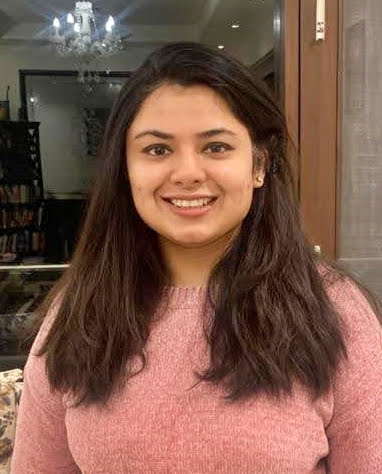Week 2 – Knitting Block 2 (Fair Isle pattern) – Part 1
Hello fellow knitters! First, a very Happy New Year to all of you! I hope you all have a wonderful year ahead full of lovely, complex and interesting knitting.
Now that you’ve finished one block of your Afghan, I expect you’ve got the basic idea of how we will proceed from here on. You must have figured out your casting-on and binding-off techniques. They are going to remain the same for all the remaining blocks. If there are any changes, I will point them out, otherwise, we proceed as usual. The only thing we have to remember is that all our blocks must be of the same length, so measure the first block you make and keep that as your standard. As for the width of the block, the number of stitches we cast on for each block will maintain that. FYI, the length of my block is 9 cm.
Let’s move on to Block 2 of the Afghan. Many people appreciated a picture I had put up a few days ago – a picture of the first cowl I had ever knitted.

I have used a Fair Isle pattern for this cowl. So I thought, why not try our hand at some Fair Isle for Block 2 of the Afghan? Fair Isle is a type of colour work and is also called stranded knitting. The patterns are often traditional and look complex but are quite simple to execute. In Fair Isle, there is no limit to the number of colours you use – in fact, we will use all five of our colours for this block – except, in any row, there will never be more than 2 colours. So it is stranded knitting with 2 colours except for the design changes every row.
First, a look at the pattern – in Fair Isle, there are never any written instructions because we make it in Stockinette Stitch, i.e. alternate Knit and Purl rows. But you get a chart which shows the design that you have to follow and where you have to change colours, etc. Here is the chart

If you look at the chart closely, you will observe two things –
1. Each row in the chart has either 1 or 2 colours in it, never more than that. Therefore, while knitting that row you need to only juggle two pieces of yarn which is something you have already done for Block 1.
2. Every few rows the design changes – the whole group of rows that form one design is called a design element. For example – Row 1 to 7 is one design element, Row 8-10 is another and so on.
Now, this pattern uses all 5 colours – I have put Colour A to E in the legend based on the colours I am using. You can do the same with your chosen colours – Colour A being lightest and Colour E the darkest. You can use your colours in the same way it has been given in the pattern, making no changes or you can move colours around. My advice is that you check your colours by putting them next to each other – sometimes the tone of some colours is so close that when you use them together, the design doesn’t stand out. For example, if for Rows 1 to 7, I had used the 2 colours prescribed in the legend, then my design would not have been visible at all. I changed one colour so that the design would stand out. You can do the same depending on the colours you have.
Anyway, cast on 37 stitches using Colour C (or the colour you have chosen in its place) using a cast-on of your choice. Start knitting with a knit row – from now on all odd-numbered rows will be knitted and even-numbered rows will be purled, irrespective of which colour you use in that row. So when you are on an even-numbered row, say Row 4, you will introduce the new colour while purling. It is done in the same way that a new colour is joined on a knit row.
The remaining block will be knit exactly the way we knit Block 1, i.e. through Stranded Knitting. We will carry our yarns, make strands, and trap our floats as we did with Block 1, all the time following our chart. For a refresher on stranding, go through my post for Block 1 – I’m not repeating it here all over again. However, unlike Block 1, you may need to cut your yarn more than once while knitting this block, because possibly the colour you want to use in the next row may be at the other end of the work. Taking the yarn across the entire width of the back is a bad idea, so it is better to cut the yarn. It will leave you with lots of short tail ends, but that doesn’t matter. In Part 2 of this block, I’ll tell you how to finish the block and what to do with your yarn tails.
I am knitting my block with you and haven’t completed mine yet. So hurry and start knitting yours – finish the 56 rows of the chart but don’t bind off yet – we’ll do it together.

Till the next time, then. Happy knitting to you!
~P
Download pattern from here


